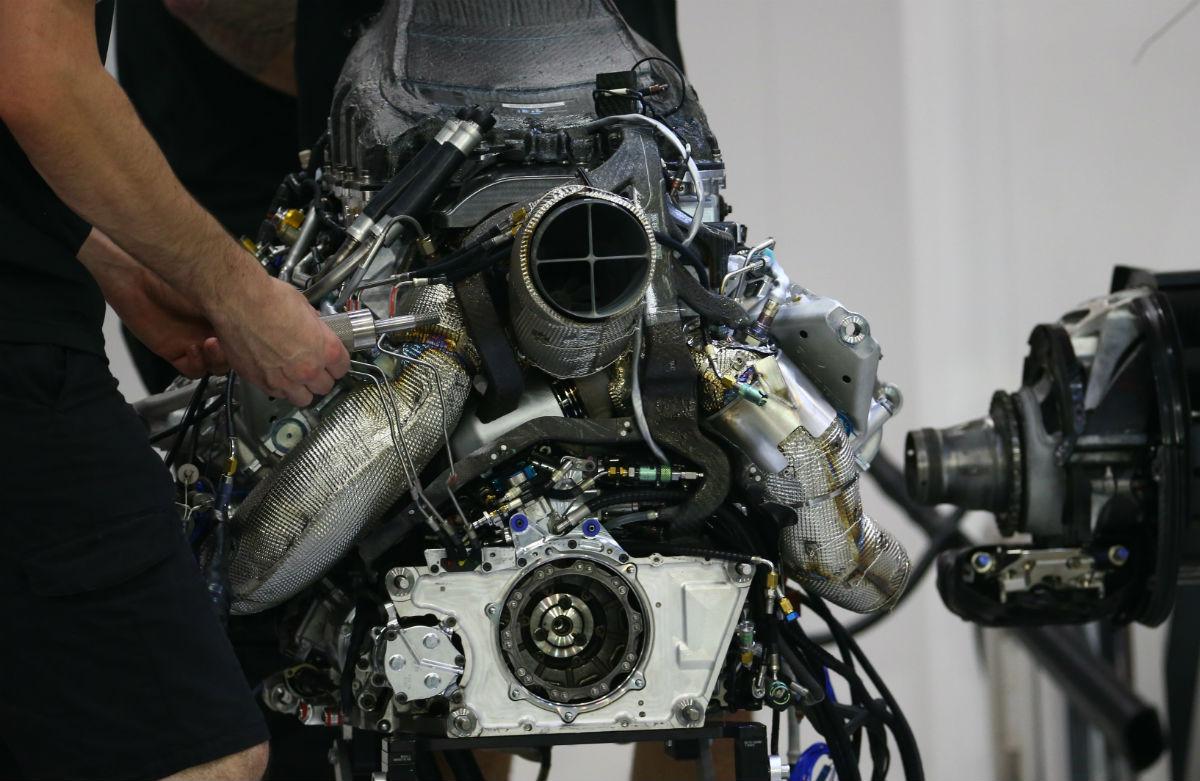
- Login or Register
No account yet? Sign up
An onboard video with a bad cam but with interesting sounds... You can hear the blow off valve many timesgruntguru wrote:If the fluttering noise occurs when power is reduced (closing throttle) it is more likely to be a blow off valve.
omg did the turbo overheat and shrunk
Must have got wet....NL_Fer wrote:omg did the turbo overheat and shrunk
In one sense the engines are operated very close to steady state. Power transients are initiated by the drivers right foot and opening or closing the throttle has an immediate effect on boost by restricting intake air flow. Except for extreme power reduction, the rpm is maintained above 10,000.ringo wrote:It's not as surface level as that. The engine is not operating under steady state. Also the PU is not designed to waste the minimum amount of energy, it's designed and programmed track to track to produce the most performance from 100Kg of fuel. We see this when the cars go in different power modes during a race.gruntguru wrote: The formula is fuel efficiency. Opening a wastegate wastes energy. The PU is designed to waste the absolute minimum energy. The design process carefully matches the turbine, compressor, piston engine, MGUH etc to avoid any situation where the wastegate would need to be opened. Boost control is primarily by MGUH. At full power the MGUK (120 kW max) is able to use all the energy produced by the MGUH so there is no need to open the wastegate, even if the ES is full.
The wastegate is massive. Way bigger than they would need for boost control. Suggests that its primary function is to reduce back pressure to zero in qualy' mode.
If it was just black and white as aboslute minimum there will only be 1 mode of operation.
Couple of points there.ringo wrote:The above is a very bold statement, and i don't think we know the design philosophy behind these engines. Basically you are saying that a four way performance compromise is being made, and a variable that reduces compromise is being ignored because it wastes a few grams of burnt fuel.gruntguru wrote: . . . . The design process carefully matches the turbine, compressor, piston engine, MGUH etc to avoid any situation where the wastegate would need to be opened.
Let me give you an example. The car is exiting a corner on a wet track. The driver applies the throttle. The boost starts to climb and the energy store is full. Traction is limited. Are you telling me that the MGUH will attempt to control boost by sending over 100hp to the rear axle when it is not needed?
That's just one situation where you simply tie up the whole system with a cumbersome and finicky way of boost control.
Put a waste gate in the situation and you have independent and precise control over you power unit and traction.
I think a radial inflow turbine will actually backflow (pressurise the exh manifold) rather than evacuate it due to centrifugal force. This may be an advantage for axial or mixed flow turbines in this scenario.Tommy Cookers wrote:wastegating to so-called zero (or partial reduction of) so-called backpressure is interesting
the turbine is at max rpm and will try to evacuate the exhaust manifold ??
the mu-h motoring power lost by driving the turbine will be how much ? ..... and how/why ??
we might want to throttle the turbine but cannot ?
Looks very prototypal
to reduce to nominal 'zero backpressure' ie close to ambient .....gruntguru wrote:I think a radial inflow turbine will actually backflow (pressurise the exh manifold) rather than evacuate it due to centrifugal force. This may be an advantage for axial or mixed flow turbines in this scenario.Tommy Cookers wrote:wastegating to so-called zero (or partial reduction of) so-called backpressure is interesting
the turbine is at max rpm and will try to evacuate the exhaust manifold ??
the mu-h motoring power lost by driving the turbine will be how much ? ..... and how/why ??
we might want to throttle the turbine but cannot ?
I tend to think they must be relying on blowdown energy to overcome turbine windage (and backflow) without pressurising the exhaust during the exhaust stroke.
Do you mean radical changes as:Wazari wrote:Yes it's very compact, designed to fit the "size 0" concept bodywork. They will have a new PU for 2016 with radical changes.